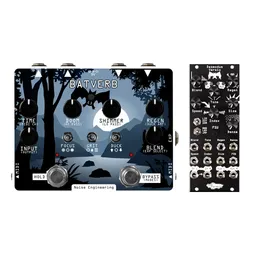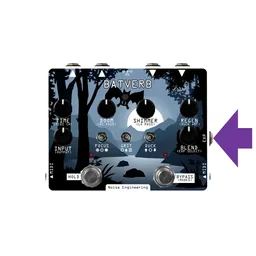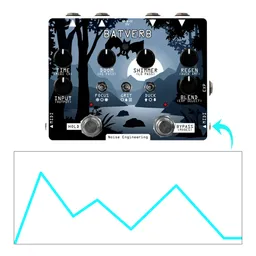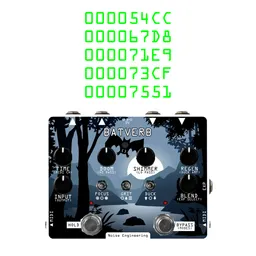We’re big fans of Eurorack, but there’s a whole world of wonderful gear out there – recently, we released Batverb, our stereo reverb pedal. Last year, we released Nive Grad, a stereo level shifter designed to make integrating external gear with Eurorack simple and easy.
If you’re also a fan of hybrid setups, this is the post for you: we’ll be discussing how we like to integrate stereo atmospheric effects (like Batverb) with a Eurorack system.
Levels
Guitar pedals and line-level effects generally operate at a level that’s much lower than Eurorack. Some line-level effects will do okay with quieter Eurorack sounds, but most any guitar pedal will clip when processing a Eurorack source directly.
Enter Nive Grad: it features an attenuation section and an amplification section with fixed reduction levels. The +/-12dB jacks are configured with line-level devices in mind, and the +/-24dB work great with pedals. We found that these levels were excellent for nearly all devices that we patched together, making Nive Grad extremely convenient for plug-and-play operation with external gear.
Patching end-of-chain effects
Some patches call for processing the whole mix with something like reverb, distortion, or compression as an end-of-chain effect. Especially in smaller systems, or patches with just a few voices, running a whole patch through a reverb can be a great way to add space and character.
As an example, let’s say we’re using a compact mixer like Xer Dualis to combine all the voices in our patch. To take the output of Xer Dualis down to pedal level, simply patch its outputs to the bottom Input jacks on Nive Grad. Then, patch the -24dB out jacks to the inputs on your pedal

Send effects
If you’re using a large mixer like Xer Mixa, you may want to use an external processor as a send effect, allowing you to control how much individual voices are sent into an atmospheric processor like Batverb.
The patch is similar to the previous example, but we need to bring the pedal back up to Eurorack levels after dropping it down to pedal levels after processing.

Since the dry signal will be handled by the mixer, we’ll want to have Batverb’s Blend control set to 100% wet. This will generally make using send effects easier: with blend set at, for example, 50%, any time we increased the send amount for a channel we would also be increasing its dry level, making it more difficult to balance our mix.






